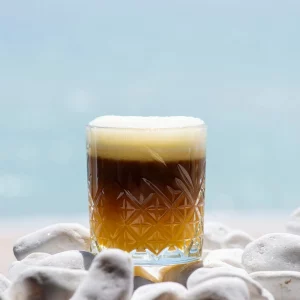Tea has been around for centuries and it’s been regarded as a key to good health and happiness. It is a natural way to improve overall well-being, both mentally and physically. In addition to the numerous studies demonstrating the many health benefits of tea, the simple act of making a cup of tea and sitting down to enjoy it appears to have a profound effect on body, mind and soul.
Choosing the right tea for your taste can be as difficult as selecting the perfect coffee bean or a complementary bottle of wine. Surprisingly, all teas comes from the same plant, Camellia Sinensis, an evergreen native to China. The plant’s leaves range from smooth and shiny to fuzzy and white-haired, each of which produces a different type of tea. These leaves contain a powerful antioxidants called polyphenols, which is believed to have anti-aging properties.
The main factor in determining which type of tea is produced is the method of production and the length of time the leaf is dried or oxidized. The green, white, and yellow tea require minimal oxidation, a black and pu-erh tea need a full oxidation, and an oolong tea has a wide range of oxidation and is considered semi-oxidized.
Here are the different types of tea and their health benefits:
Green Tea
Green tea, which accounts for about 10% of global tea consumption, is a powerhouse of antioxidant-rich polyphenols and phytochemicals. It is one of the healthiest beverages you can drink. It has fewer calories and less caffeine than black tea and coffee. It is known for its fresh, grassy flavour and its health benefits, which include improved brain function, and reduced risk of chronic diseases such as heart disease and type 2 diabetes.
Green tea has been linked to a lower risk of breast, lung, and prostate cancer. It helps in fat loss, prevention of artery blockage, and the prevention of neurological diseases such as Parkinson’s and Alzheimer’s.
No wonder why it’s been used in traditional medicine for so long.
Green tea is minimally processed and undergoes very little oxidation, which helps to preserve its natural antioxidants and healthy compounds. Unlike black and oolong teas, which are fully fermented, green tea is steamed or pan-fried immediately after picking to stop the oxidation process, which gives it its unique flavour profile.
Green tea is typically consumed plain, although it can also be flavoured with herbs, fruits, and spices to create unique flavour combinations.
White Tea
The rarest of all teas, comes with great health benefits. The leaves are similar to green tea leaves, but they are harvested from the plant that have not yet fully matured and the leaves are young and tender, giving them an extremely light colour. It is minimally processed and has a delicate flavour that is slightly sweet and slightly floral. White tea is one of the least processed of all teas, which allows it to retain many of its natural health benefits.
It is packed with antioxidants, which makes it an incredibly healthy. White tea and its components have been linked to a number of impressive health benefits, including a lower risk of heart disease and cancer. It may also aid in weight loss and reduction of cholesterol level and blood pressure.
White tea is known for its high antioxidant content, which makes it an excellent choice for anyone looking to boost their overall health and well-being. It has been linked to improved heart health, reduced risk of certain cancers, and improved skin health, among other benefits.
White tea is typically harvested in early spring and is made from a specific variety of the Camellia sinensis plant. The production process for white tea involves gently steaming and drying the leaves, which helps to preserve their natural flavour and aroma.
Black Tea
This is the most common type of tea, accounting for roughly 80% of tea consumption in the United States.
The main difference between black tea and green, oolong and white tea is the oxidation process. Green tea leaves are lightly steamed before drying, whereas black tea leaves are fully oxidized.
The production process for black tea involves withering the tea leaves, rolling them to break down the cell walls and release the tea’s natural enzymes, and then fully fermenting the leaves to develop their flavour and aroma. Finally, the leaves are dried to stop the fermentation process and preserve their flavour. This contributes to the distinct flavour profile and caffeine content of the tea.
Because it is made from fermented tea leaves, black tea contains more caffeine and is stronger, bolder, and richer than green tea. In fact, it serves as the foundation for flavoured teas such as chai, iced tea and instant teas.
Black tea, like green tea, has been shown to have many health benefits. According to research, the antioxidants found in black tea may help prevent conditions such as heart disease, stroke, and some cancers. It can also help to improve gut health, lower “bad” LDL cholesterol, and reduce blood pressure. Additionally, black tea contains caffeine and theanine, which can help to increase energy levels and focus.
Pu-erh Tea
This tea is technically in the black tea family, but is fermented twice (instead of once), which elevates it to its own category.
Pu-erh tea ages more dynamically than any other tea because it is processed in a unique way to encourage microbial fermentation after the leaves are dried. There are two types of Pu-erh tea: raw (sheng) and ripe (shou). Raw Pu-erh is aged for several years and has a more astringent and intense, rich flavour, while ripe Pu-erh is fermented for a shorter time and has a milder, smoother taste. The processing and aging process can also affect the flavour and aroma of the tea, giving it a unique and complex profile.
It is high in polyphenols and is well-known for its digestive properties. Pu-erh tea cleanses the body by accelerating fat burning, helps in digestion, and removing toxins and free radicals. Furthermore, because it contains cholesterol-lowering statins, it may help to improve heart health.
Oolong Tea
Oolong Tea is a partially fermented tea, which means it goes through a short oxidation period that turns the leaves from green to a red-brown colour. The flavour of oolong tea is created through a process that involves withering the tea leaves under the sun, bruising them, and then rolling and fermenting them to a varying degree. This partially fermented tea is somewhere between green and black tea in terms of oxidation, and as a result, it has a unique flavour that combines elements of both.
Oolong tea is considered one of the finest (and most expensive) teas in the world. It is known for its diverse and complex flavour profile, which can range from fruity and floral to nutty and earthy. Produced primarily in China’s Fujian and Guangdong provinces, as well as Taiwan
Tea connoisseurs regard Oolong as the most delicate flavour and advise against drinking it with milk, sugar, or lemon to preserve the natural flavour.
Oolong tea is highly prized for its health benefits. It contains a lot of L-theanine, an amino acid that has been shown in studies to stimulate fat burning, improve brain activity, sleep quality and reduce stress and anxiety.

Yellow Tea
Yellow tea is produced almost exclusively in China and it is the rarest category of tea in the world. The process of making yellow tea involves carefully controlling the oxidation of the tea leaves, which results in a unique flavour profile. The tea is allowed to ferment a little before being completely dried. This process gives the tea its distinctive yellow colour and produces a rare category of tea that is similar to green but usually more mellow.
Polyphenols in yellow tea are known to improve digestion, reduce stress, and boost the immune system. The tea contains a high concentration of antioxidants, which detoxify the body and increase metabolism, assisting with weight loss.
Yellow Tea is known for its delicate sweet, vibrant, and nutty taste and a soft fruity, floral scent.
Despite its many benefits, yellow tea remains relatively unknown outside of China, and it is often considered a luxury tea due to its limited production and high cost.
Health Benefits of Tea
Drinking tea has numerous health benefits and has been linked to a range of positive outcomes, including:
Anti-Cancer – Multiple studies have shown that the antioxidant compounds in tea have cancer fighting characteristics. Tea also provides inhibitory effects on DNA synthesis of leukemia cells and lung carcinoma cells. Tea has been linked to being both preventative and combative against many different types of cancer.
Anti-Heart Disease – Green tea has been shown to reduce obesity and LDL “bad” cholesterol, both of which are risk factors for heart disease and diabetes. Green tea has also been shown to improve the function of blood vessels.
Anti-Stroke – The study, conducted at the University of California discovered that drinking green and black tea reduces the risk of stroke and cardiovascular disease. According to research, drinking three or more cups of tea per day can reduce the risk of having a stroke by up to 21%.
Anti-Arthritis – Tea has been shown to help prevent and treat rheumatoid arthritis.
Increased Mental Awareness – The amino acid L-theanine, found in tea plants, affects neurotransmitters in the brain and increases alpha brain-wave activity. As a result, you’ll be calmer and more alert.
Weight Loss – In clinical trials conducted by the University of Geneva, tea was found to increase metabolic rates, speed up fat oxidation, and improve insulin sensitivity. Furthermore, green tea contains catechin polyphenols, which increase thermogenesis (the production of heat by the body) and thus fat expenditure.
Lowered Stress Levels – Tea contains compounds, such as theanine, that have been shown to have a calming effect on the body and mind, which can help to reduce stress and promote relaxation. Tea drinkers have lower blood platelet activation, which is linked to blood clotting and the risk of heart attacks.
Oral Health – A study conducted by researchers at the University of Illinois, discovered that polyphenols found in tea help inhibit the growth of bacteria that cause bad breath and can prevent the formation of dental cavities.
Cardiovascular Health – According to studies, black tea improves blood vessel reactivity, lowering blood pressure and arterial stiffness, indicating better overall cardiovacular health.
Tea can be part of a healthy diet. It has less caffeine than coffee and it is high in flavonoids, which are good for the heart and may lower the risk of cancer. Whatever area of health you want to heal, take a look at what tea can do and raise a cup of this awesome drink and to enjoy a healthier heart, brain, and body.
It’s important to note that not all teas have the same benefits, and the amount of tea needed to see these health benefits can vary. Additionally, some of these benefits may be more pronounced in certain populations, such as older adults or people with certain health conditions. Nevertheless, drinking tea can be a healthy addition to a well-rounded diet, as long as it is consumed in moderation and without added sugar or other unhealthy ingredients.




